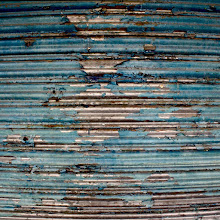Lebanon Middle School, Lebanon CT.
I am not particularly emotionally invested in baseball. I grew up only vaguely aware of the Philadelphia Phillies perpetual defeat. Football was the staple sport in my house and in my family; rarely was there a weekend when someone wasn't going to a Penn State football game. Football blared from the TV from late August until January, when the Superbowl's last seconds ticked down in the corner of the screen. Sure, I've been to baseball games (The Former Scranton/Wilkes-Barre Red Barons) and I understand the basic premise of the game. I won't ever ask what quarter the game is in, I vaguely understand stats, and occasionally I listen to a game on the radio if I happen to catch one. It was only recently I admitted my love of football to the outside world, as sports were a symbol and part of dominate culture in the U.S. that was really alienating to me. They still are part of that culture, but more recently I've found myself able to relax and enjoy them. Games are better digested live, instead of through a TV screen. I look forward to going to IronPigs' and Penn State games when I move home.
But I don't love baseball. I feel like I should love baseball, given it is America's Pastime and everyone knows that I like to be a good American . There is something about it that is closely linked to early 20th century history, the rise of leisure and the middle class. It's kind of romantic, in the context of history. I don't really know anyone who doesn't know who the Babe or Jackie Robinson is or why they're Important. Honestly, I'm totally winging this from my impression of baseball in America but it seems so closely tied to democracy in a way that I can't quite put my finger on. I also suspect that it's tied to the American dream. Movies like The Sandlot and Field of Dreams are gleaming examples of this; work hard and you, too, can have success and fame and prosperity, despite whatever obstacles of class and race you will have to overcome!
Mount Carmel Little League Baseball Field, Mount Carmel PA.
Baseball diamonds dot the American landscape. Rarely can you drive through a small town that doesn't have something resembling a baseball field, be it overgrown or perfectly manicured. It is something huge when a new stadium goes up or an old one comes down. There is something strangely magical about standing at home plate or on the pitcher's mound of ANY baseball field, be it Fenway Park or the field down the street with no lights or bases. One can't help but feel connected to something bigger than themselves, as the baseball diamond is so pressed and adhered to the collective memory of the U.S.
Pitchers' Mound, Framingham, Ma.
Over the past year or so, I've taken notice to baseball fields, photographing them if I get the chance to. I love the way dilapidated or DIY'd backstops look. I like the freshly combed dirt, the overgrown outfield, and the geometry of the diamond from the corners of my eyes when I'm standing at home plate or on the pitchers' mound. While baseball diamonds are designed to function the same way and hold a specific sport, it is endlessly fascinating to me their immense variation, which is tied to location, class and level of skill of the teams that play on them. I find them to be really amazing things to photograph and awesome spaces to occupy. I recently started a flickr set, Playing Fields, where I'll put any and all future developments in this strange, totally-out-of-context interest of mine.
Build it and they will come, right?

